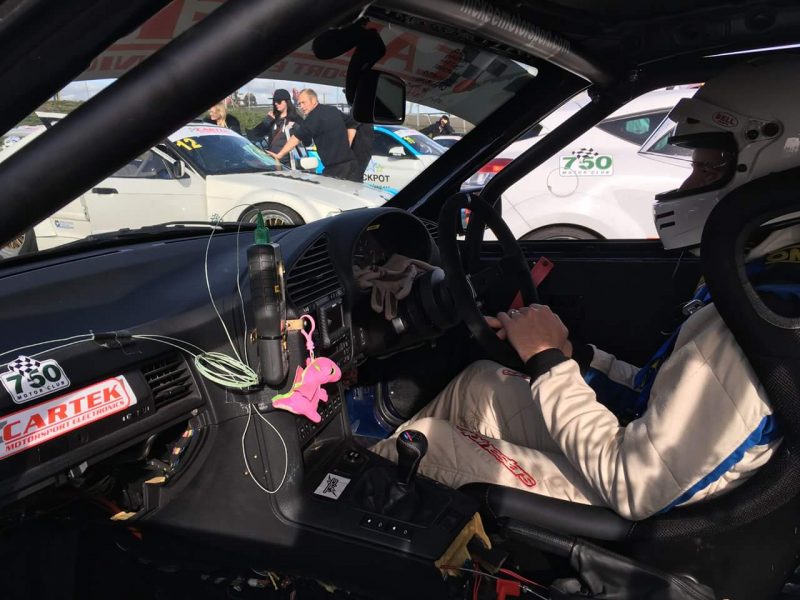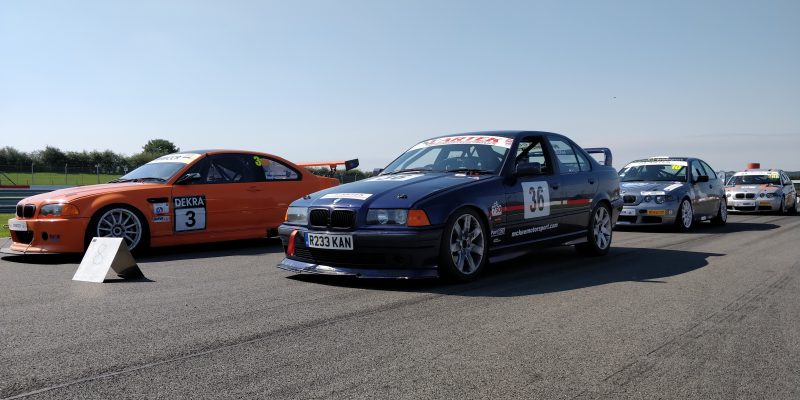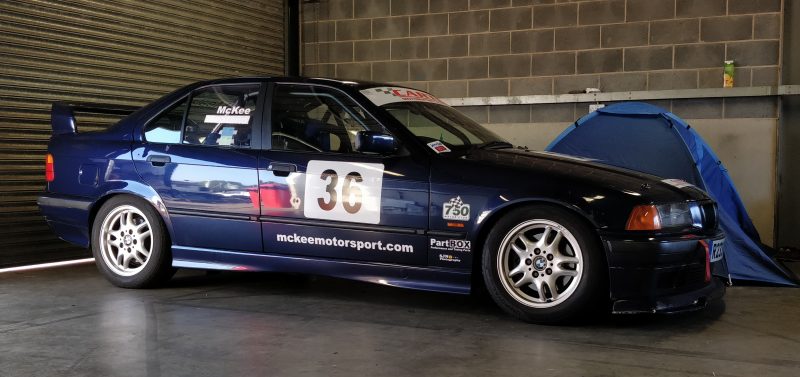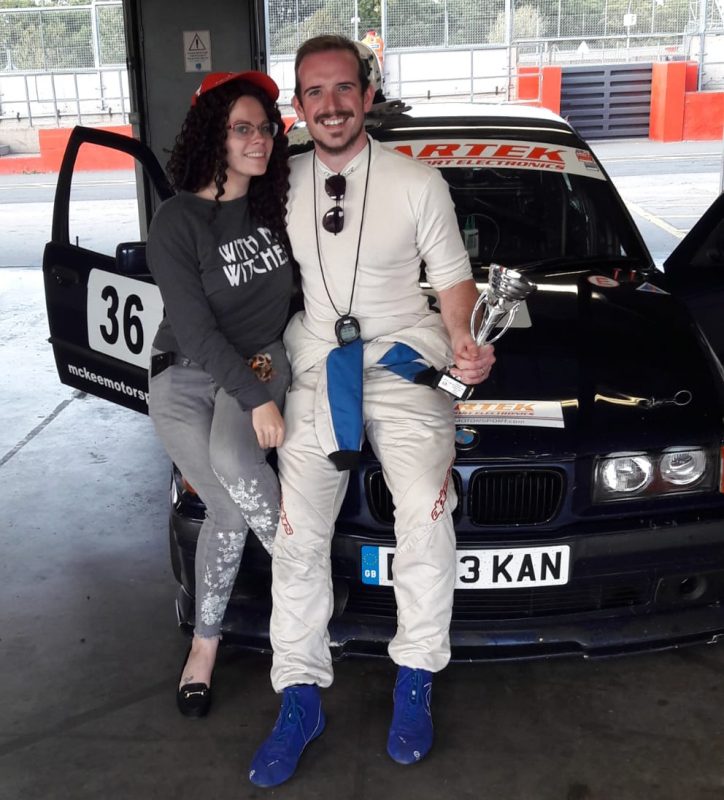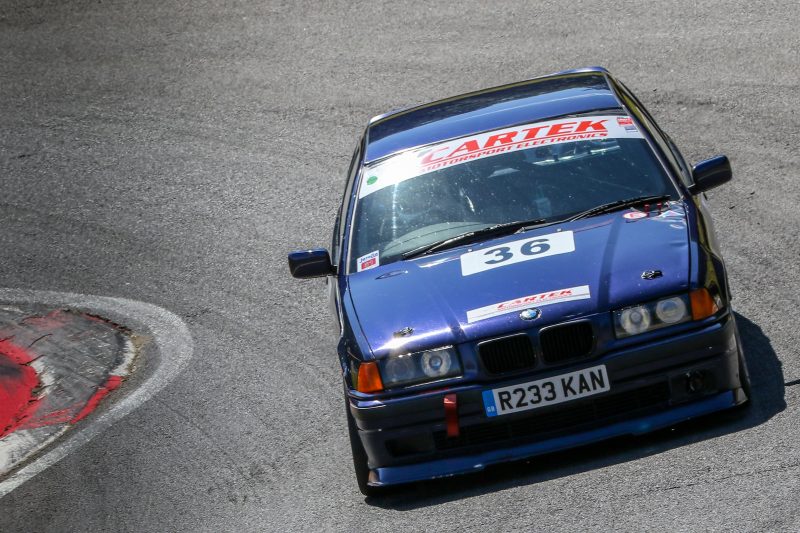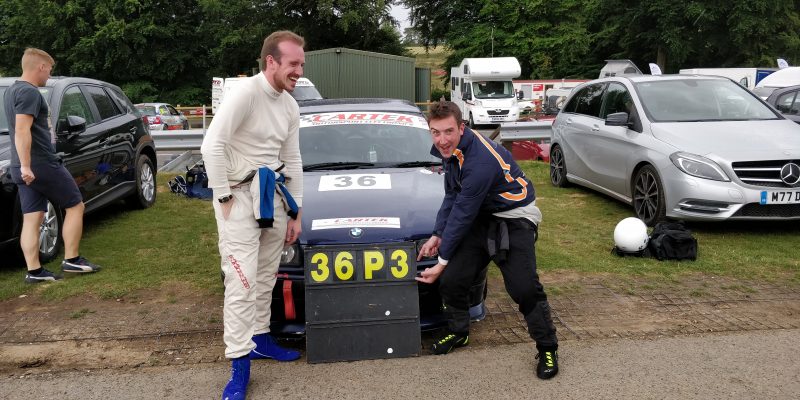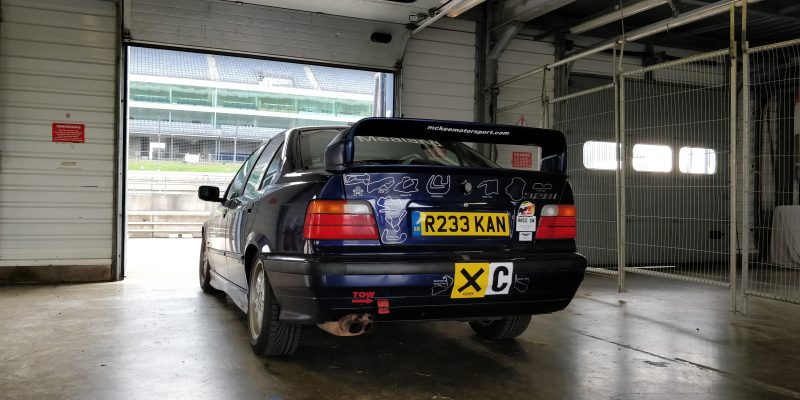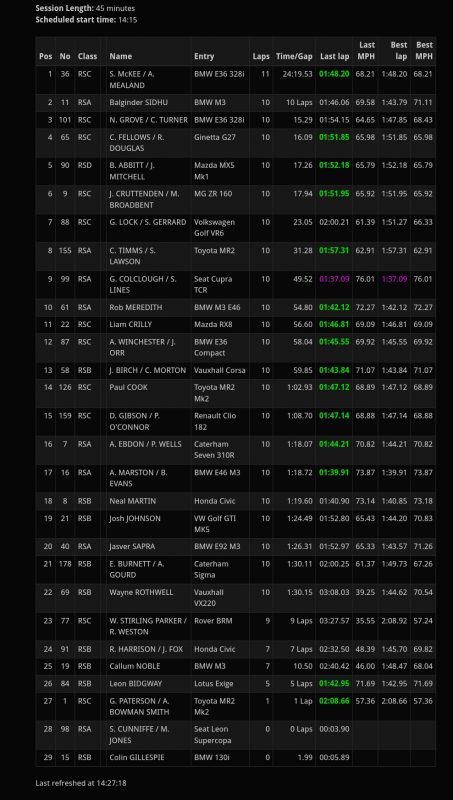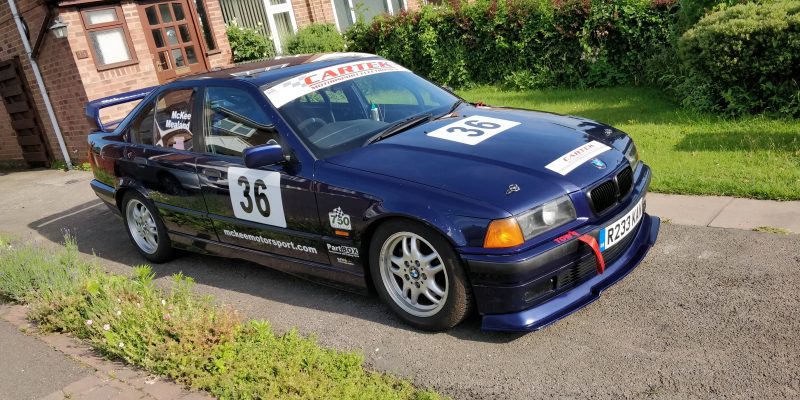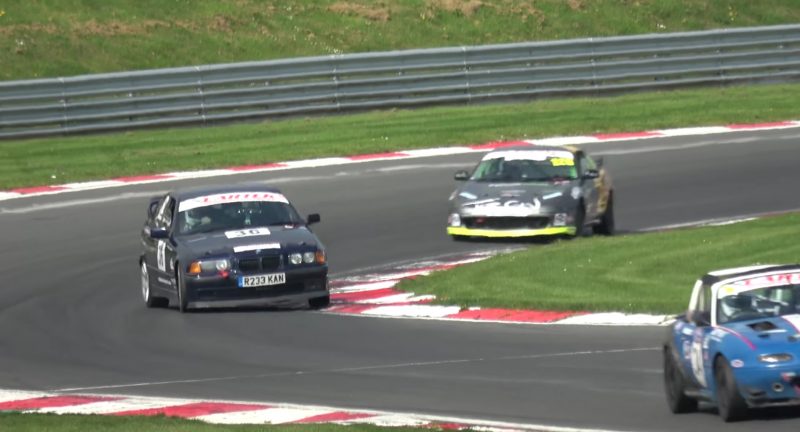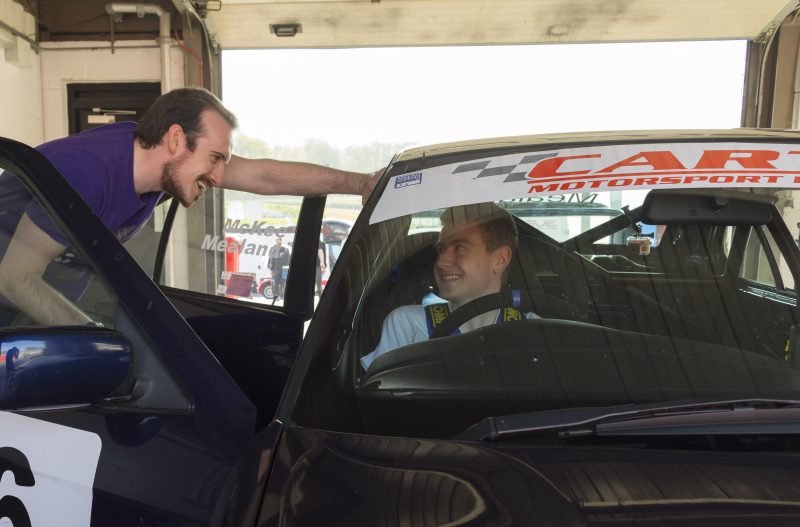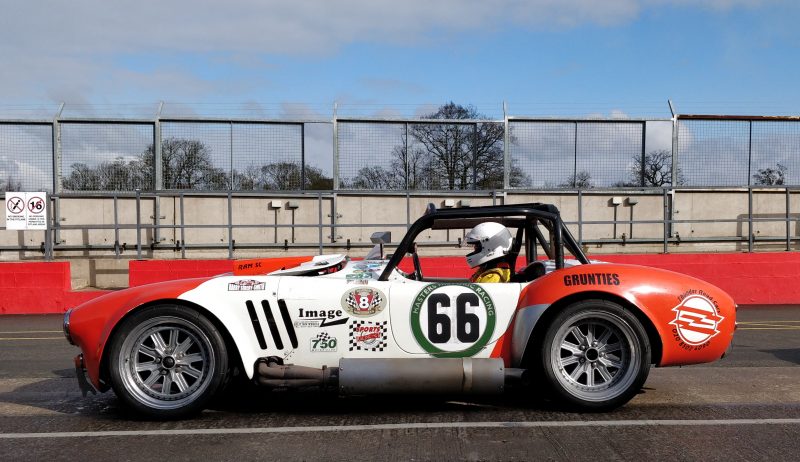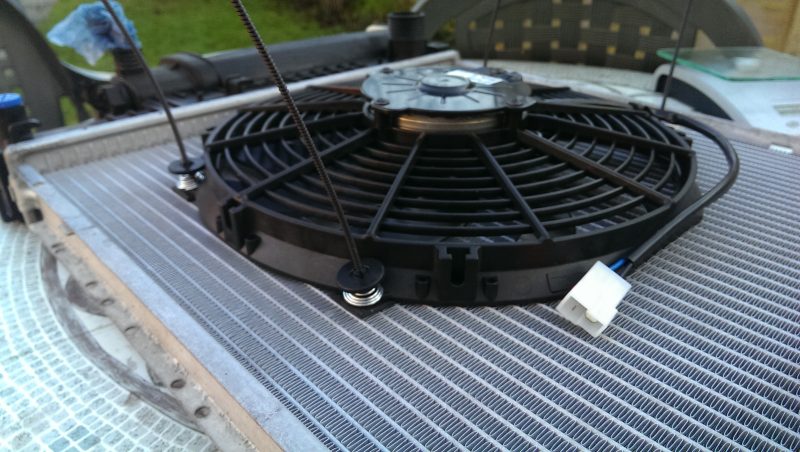Where to even begin with this one?!
October brought Snetterton, scene of the finale of our racing season with 750 Motor Club, and our most ambitious meeting yet. Rather than testing a couple of weeks in advance then competing in Roadsports on one day, we booked ourselves a three-day extravaganza: testing on Friday, 45-minute Roadsports race on Saturday, then the car’s endurance racing debut on Sunday in the two-hour Club Enduro race. It was a serious undertaking – the sheer amount of tyres and equipment we needed was a real effort to pack in, but the car was still driven to the circuit in Norfolk, and clocked her 190,000th mile on the way.
Friday was only the second motorsport test day (as opposed to a track day) that I’d ever been to. I wasn’t even planning to drive – having done many hours’ racing at Snetterton already this year, I elected to give Adam as much seat time as possible in his first visit to the circuit. It didn’t pan out that way, with the two half-hour sessions both cut short by red flags, but Adam did at least find his way round and put in some respectable times. The car seemed pretty solid, particularly the Performance Friction brake pads, and we also learnt (deliberately!) how low we could run on fuel before the car started to get starvation issues. We were able to use 58 of the 62 litres the tank holds, thanks to the dual fuel pumps, which was an encouraging sign for Sunday’s endurance race.
This view of Dan Rogers’ MX-5 on its way to the assembly area says it all about Saturday’s weather. After testing in 22°C warmth and blazing sunshine, we had rain overnight to wash the circuit clean and then grey, cold skies all day. Qualifying was at least dry-ish, and we managed to put the car 5th of 16 cars in Class C with a 2:18.90, but the heavens opened big-time between then and our race, which was going to be full wet throughout. As only his second-ever race start loomed in challenging conditions with forty other cars around him, Adam didn’t look nervous at all…
Oh, no. Wait. He did.
As it turns out, he needn’t have done, because after two tentative green-flag laps to allow the field to figure out the conditions, the race got underway without incident. Adam did a great job of getting into the thick of the action and pushing the car up to, and often over, its limit right from the off. Particularly for a rear-wheel-drive car with relatively little weight over its rear axle, trying to find traction on a properly wet circuit is treacherous, and your reflexes to catch the near-inevitable oversteer need to be cat-like. There’s plenty of that in the opening lap video below, which also shows why racing in the wet is so dicey: it doesn’t matter how good your wipers or how polished your windscreen, the sheer amount of spray thrown up by racing cars with wings and diffusers means the air becomes opaque if you’re within fifty feet of another driver! It takes careful judgement to be remotely competitive in these sort of conditions.
After a great drive adapting to such lethal conditions on a circuit he’d only first seen the day before, Adam came into the pits with a big gaggle of cars who had all missed an unluckily timed safety car. I wasn’t even expecting him in that lap, finding out when I saw the roof of my car enter the pitlane, giving me barely enough time to dash into the garage to swap raincoat for balaclava and helmet! I arrived at the side of the car still pulling on my gloves as Adam got out. This, as it turns out, isn’t ideal preparation for entering a soaking wet motor race.
I misjudged the grip on the exit of Riches, gave her too much throttle too soon, and had a half-spin that pulled me to the inside. I just kissed the barrier, spending the whole time watching it approach thinking “Oh please no, we’ve got another race tomorrow, don’t wreck the car ten seconds after leaving the pitlane”…
I got away with it. As this post-nudge photo shows, there wasn’t a mark on the car, it really was a very gentle tap. But it taught me a valuable lesson. Two seasons of campaigning this car successfully and always managing to be on the pace had left me complacent, and apart from not even having my kit on when the car might have come into the pits at any time, I didn’t have my mind in the right place to race it. I can’t overstate how important mental preparation is to delivering your best performance as a driver – the circuit was incredibly slippery and the rate of attrition was really high, with cars falling off left right and centre and the race eventually being red-flagged, but I knew that was a mistake I would never normally have made. Lesson learned.
Between getting caught out by safety car timing and promptly throwing myself off the circuit, the rest of my race was pretty uneventful with very few cars left around me. Being lapped by Michael Price’s race-leading Porsche 997 towards the end was quite impressive – the power that thing could put down even before the apex, thanks to its rear-engined weight balance, was astonishing! Eventually bringing the car home 9th in class and 27th of 40 starters wasn’t what we’d hoped for, but at least she was intact and in good shape for Sunday’s endurance race. We cleaned the car up, took the wheels off to spanner-check all the major components and found everything in order. Off for a beer and a look at the day’s race footage.
Sunday dawned a much prettier day, with no threat of rain. “Moving up a league” felt quite real when applying the Club Enduro sponsor and championship stickers, and refuelling the car for qualifying with the “dry break” dump churns we’d use to take fuel during the race.
Qualifying was a busy affair, with no fewer than fifty cars on Snetterton’s three miles of tarmac. We eventually found some space and scored a half-decent laptime to put ourselves once again 7th of 17 Class C entries, and 37th overall. This didn’t really worry me, two hours is a long time and grid position isn’t everything – going the distance was what concerned me. The car had never been driven at racing speeds for more than 45 minutes at a stretch, and what happened after that was a complete leap into the unknown. With the tank brimmed all the way up the filler neck and everything we could think of double- and triple-checked, it was time to go.
This was my twelfth race, I’m not really new at this any more. I’d never touched another competitor in any of them, never had to make an unplanned pitstop, and I was strapped into easily the most dependable car I’ve ever owned. But a rolling start in a field of fifty, from MX-5s to fully-fledged GT4 cars driven by professional racers, asking this home-prepped car to do a genuine endurance race? I was nervous. I had no idea what was going to happen out there.
After the usual agonising wait in assembly, the car felt fine through the green flag lap, everything seemed to be warming up well, the field looked in good shape and as I came around Coram towards the pit straight I could see the red lights on the gantry to signal the start was going ahead. Close right up to the car ahead, third gear, get ready.. hear the engine notes rise as the race leaders open the throttles, and go!
You might be entirely unsurprised to hear that when the lights go out, all thoughts of “it’s a long race” fall away. By the end of the first lap I’d put nine more cars in my mirrors, and it felt absolutely awesome! There followed half an hour of feeling out for the limits and settling into a groove, putting in times neatly in the 2:18.6 – 2:20 range, pretty much as in qualifying and fighting up to third in class. A safety car period at the half-hour mark gave a bit of time to cool the car and myself, before resuming into a great battle with the #52 MX-5 of Paul Sheard and Steve Dolman. It was really hard work to break away from this obviously well-set up and nicely driven car, but I finally managed it by the time I came into the pits after an hour and ten minutes.
But this was to be no simple driver change. In this two-hour race we’d cover 144 miles of Snetterton, three-quarters of a Grand Prix distance, and the car’s standard fuel tank wasn’t enough. So we’d need to refuel during the stop. Club Enduro’s rules allow for this, giving a mandatory pit stop for which the car must be stationary for three minutes (compared to 1min in Roadsports), but it’s still tight getting enough fuel into the car in that time. The Tuff Jugs we were using are less than a tenth the cost of the ATL closed-loop system you’d see professional teams and some of our competitors using, but they’re slow, and each 20-litre jug takes about a minute twenty to drain into the tank. Practicing the stop beforehand with Storming Camel Motorsport‘s Nik Grove, who’d selflessly offered to help us during our stop and lend his experience of running an E36 in Club Enduro, the fastest we’d managed was 3min35 including the driver change. In the real pitstop I took a bit of a judgement call and gave less fuel than we’d planned, 30 litres instead of the full 40, and after a pretty seamless stop we got the car out with Adam at the wheel after 3min17.
Rejoining fifth in class, Adam was straight into the thick of battling cars for position, and any thought of a gentle rhythm was lost – afterwards he described it as a sprint race that happened to last nearly an hour! After being strapped in and focused for almost 90 minutes, I finally got to release the tension and reflect on what we’d achieved so far. Thanks to Josh Barrett, that included the opportunity to share my somewhat excited post-stint thoughts on the air!
 Photograph copyright Jon Elsey Photography
Photograph copyright Jon Elsey Photography
It felt great standing on the pit wall seeing the car come through lap after lap, with Adam clearly pushing hard and going faster almost every lap. So much was he improving that he set his fastest lap of the race, indeed the quickest he’s ever driven around Snetterton, on the very last lap after almost an hour in the car! I can’t imagine better proof of car and driver being entirely up to the task. It felt quite surreal seeing him take the chequered flag – the car still looked immaculate and clearly wasn’t carrying any issues. She was now a bona fide endurance racer. Unbelievable!
We finished 7th in class and 27th of 50 starters overall – the latter being particularly satisfying, with 12 cars from classes above failing to outperform us or even finish at all. But the position wasn’t really the point, our goal was to try Club Enduro ahead of entering the championship in 2019, and find out whether we and the car were going to be able to do it competitively. The answer was a resounding “Yes!”, and just getting across the line in a car that was still fit to drive home afterwards felt better than some podiums I’ve scored. To have been fighting near the front and feel the car still performing her best after dozens of laps was incredible. I’d been on high alert feeling the brakes, the tyres, the suspension and listening for any telltale whine or knock or rattle that told me we were in trouble and I’d need to back off.. but it never came, she was just as good at the end as in that opening lap. What an achievement. What a car!
Rare anyone can say they were smiling the whole way up the A14…
Sam










